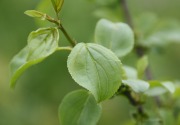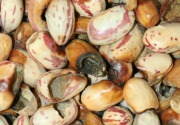| |
| |
 |
 |
| |
 |
|
MMMM d, yyyy |
|
| |
Despite challenging environmental conditions last year, record yields were still set. Here are the 15 eastern Canadian farm winners in the 2016 Dekalb Seed for Yourself Yield Challenge.
» Read more...
Generations of beetles born on the leading edge of an invasion are far more able to push on than those born farther back, report scientists. Called the Olympic Village Effect, it’s known by scientists as the assumption that, were Olympians to reproduce during the games, their offspring would likely carry forward evolutionary advantages for strength and agility.
» Read more...
A lack of workers is costing the province millions of dollars a year. According to P.E.I. research numbers, the Island’s agriculture industry employed 4,900 people in 2014 but the industry was unable to fill 200 jobs.
» Read more...
|
| |
 |
 |
| |
|
| |
 A new study is helping Quebec researchers understand how to better control soybean aphid in the province. Julie-Éléonore Maisonhaute is the author of “Population dynamics of the soybean aphid in Québec,” along with Geneviève Labrie and Eric Lucas. The article, published this spring in the Journal of Economic Entomology, analyzes 12 years of archive and field data collected from the Montérégie area of Quebec.
» Read more...
A new study is helping Quebec researchers understand how to better control soybean aphid in the province. Julie-Éléonore Maisonhaute is the author of “Population dynamics of the soybean aphid in Québec,” along with Geneviève Labrie and Eric Lucas. The article, published this spring in the Journal of Economic Entomology, analyzes 12 years of archive and field data collected from the Montérégie area of Quebec.
» Read more... |
| |
 Sometimes it’s a good thing to come second. Dry beans are the second choice for western bean cutworm moths looking for a place to lay their eggs. They prefer corn at the pre-tassel stage, but if they can’t find that, then they’ll go to dry bean fields. So far in Ontario, this invasive pest is causing the biggest problems in corn, but western bean cutworm has the potential to be a serious pest in dry beans, as Michigan growers have found.
» Read more...
Sometimes it’s a good thing to come second. Dry beans are the second choice for western bean cutworm moths looking for a place to lay their eggs. They prefer corn at the pre-tassel stage, but if they can’t find that, then they’ll go to dry bean fields. So far in Ontario, this invasive pest is causing the biggest problems in corn, but western bean cutworm has the potential to be a serious pest in dry beans, as Michigan growers have found.
» Read more... |
| |
 |
 |
| |
|
| |
|
|
| |
| |








